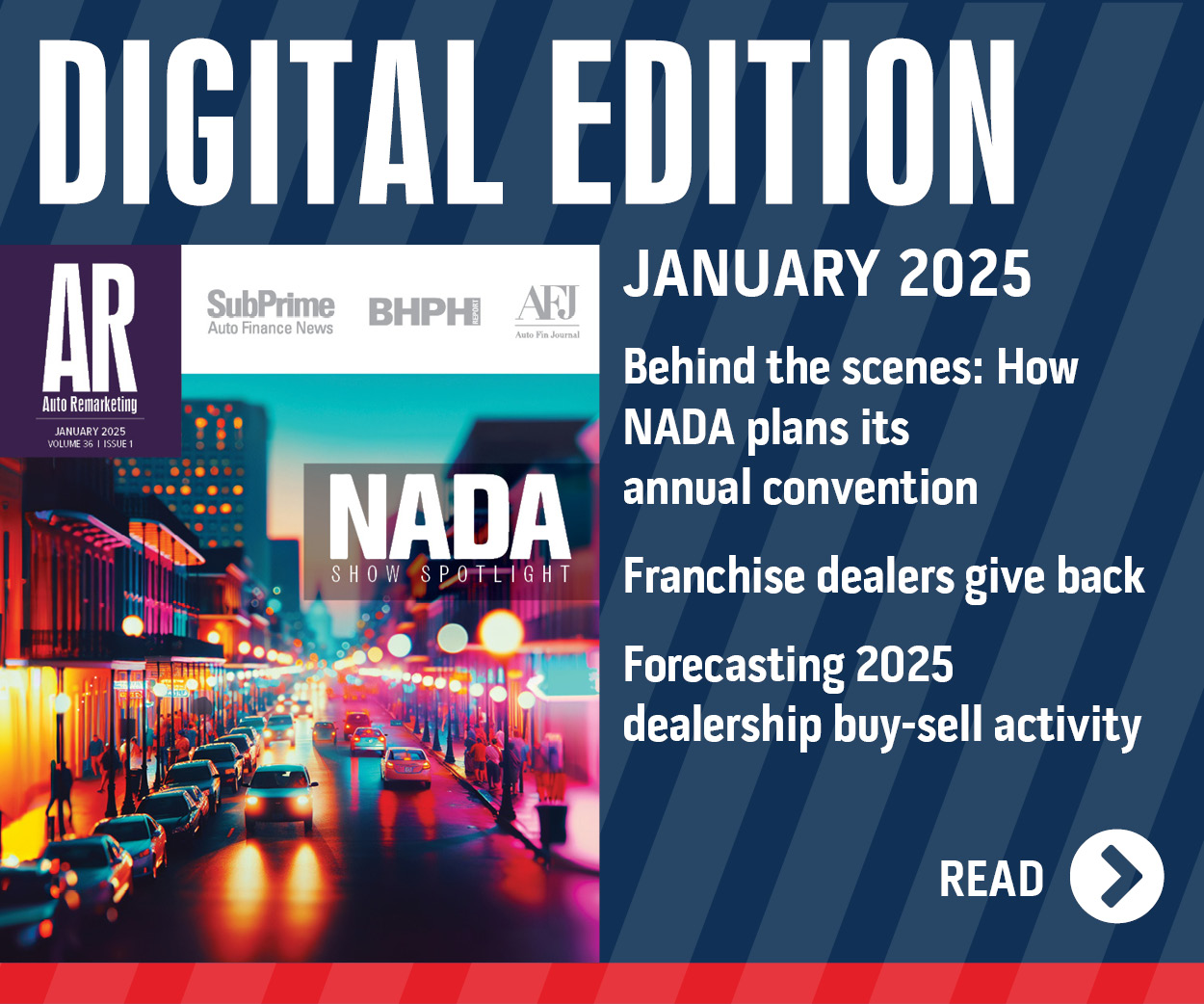Transforming auto dealer services for the subscription economy

Music. Movies. TV shows. And even … razors.
The subscription economy has completely taken over.
Customers now expect to pay a flat monthly fee for unlimited services. That expectation is moving into the automotive industry, according to Syncron, a provider of cloud-based after-sales services. The company said in a news release that because of those expectations, auto manufacturers are looking to identify additional revenue opportunities.
Syncron released new research showing that because of customers’ increasing interest in subscription-based services, auto manufacturers have been forced to redefine their dealer service operations.
“As the world shifts to a subscription-based economy, the responsibility for maintenance and repairs is shifting from the end-user to the manufacturer,” the report states. “This shift will completely transform dealer service as we know it today.”
In the report, titled, "Shifting Gears from Reactive to Proactive: How Customers' Rising Interest in the Subscription Economy is Revolutionizing the Automotive Dealer Experience," Syncron writes that until now, automotive service has followed a model in which the dealer service department repairs vehicles after they have already broken down. But to meet the demands of subscriptions, OEMs will need to equip dealers to repair vehicles before they ever fail.
To provide OEMs with the resources they need for the new model, Syncron surveyed 500 vehicle owners across the United States and Europe to understand how customers view the dealer service experience today and what their expectations are for the future.
Dealers: Strong service must continue
The new report shows those findings by first focusing on the dealer side. It notes that as auto manufacturers seek to transform their organizations to prepare for a subscription-based business model future, they must also continue providing strong service at their dealers. Retaining service customers is a challenge for OEMs in areas such as having the right service parts in stock.
But in spite of those challenges, almost 59.1% of vehicle owners say they use their dealer for maintenance and repairs. And more than 90% say their most recent dealer transaction was a positive experience, with 52.7 answering “good” and 38.5% saying “very good.”
The survey then addresses why customers would leave their dealers for a third-party service provider. More than 90% of respondents said price was the biggest factor.
Subscriptions: Familiarity low, interest high
Moving on to address the subscription economy, the report states that although vehicle subscription services are “shaking the industry to the core,” almost 62% of survey respondents still say they are not familiar with the vehicle subscription services concept.
But interest is high. More than 57% of respondents say they would consider a subscription if maintenance, repairs and insurance were included in a flat monthly cost.
At 60.1%, included maintenance and repairs was the biggest advantage survey participants saw in a vehicle subscription service, followed closely by “fixed monthly cost” at 57.9%. Coming next at 43.9% was “No concern/worries for scheduling repairs and incurring long wait times.”
Just over 57% said they would be willing to pay a premium beyond their current monthly car payment for vehicle subscription services.
The new move toward subscription services “changes everything for OEMs,” who will become fleet owners, Syncron writes. They will have to work to “maximize product uptime and work to develop a subscription service model that is scalable and profitable.”
So what should auto manufacturers do next? Syncron says they should retain customers “through exceptional customer service experiences.” Customer expectations should rise, and subscription services will become more commonplace. That will increase the importance of the service organization.
“Automotive manufacturers will no longer just sell vehicles, instead selling access to and the outcome those vehicles deliver – and the service supply chain must be ready today to meet these needs of tomorrow,” Syncron writes.
More than half of survey respondents said they were not loyal to a particular brand, which Syncron found surprising. But the respondents did feel loyal to a positive customer experience. Thirty-six percent said a negative dealer experience would impact their perception of a customer brand, and Syncron said that could mean those customers would not hesitate to look for a different dealer with a better service experience.
Thirty-eight percent of respondents reported little to no issues with dealer service, and 78% were likely to use their dealer service center for a future repair. That is despite challenges they mentioned such as high prices and long wait times.
What about the other 22% who weren’t likely to go to the dealer service center? They said they might use the dealer for service if the dealer had the exclusive ability to send a notification that a specific vehicle part was about to fail and could preemptively schedule the repair.
“This sort of proactive maintenance won’t happen overnight, however,” Syncron writes. “OEMs must invest in the technology and human capital to make this vision a reality.”
More evidence of low subscription awareness
Another recent survey shows similar results to Syncron in revealing that consumers’ familiarity with the subscription concept is low. A new survey from Autolist finds that consumers are still mostly unaware that vehicle subscription is another alternative to buying or leasing. But how can vehicle subscriptions become more popular? The answer, according to Autolist, is lifestyle vehicles.
“Car shoppers clearly view subscriptions as a way to get access to a type of vehicle they might otherwise not commit to,” Autolist analyst Chase Disher said in a news release.
The Autolist survey asked participants which cars they would consider for subscription. Sports cars, pickup trucks and luxury vehicles were the top three.
“While subscriptions are having a hard time gaining traction with consumers, interest in lifestyle vehicles is one way they could succeed,” Autolist analyst Chase Disher said in a news release. “Car shoppers clearly view subscriptions as a way to get access to a type of vehicle they might otherwise not commit to.”
Autolist’s survey, which polled 1,548 current car shoppers to determine their awareness of and attitudes toward vehicle subscriptions, found that 36 percent of current car shoppers said they would consider subscribing to a sports car. That is the highest of any vehicle type offered.
Thirty percent said they would subscribe to a full-size pickup truck, and 30% said they would subscribe to a luxury vehicle.
More than two-thirds of consumers said they were unaware of subscriptions being offered for vehicles. Also, only 17% of shoppers could identify an automaker that offered any of their vehicles as a subscription.
But even with that low level of awareness, Syncron chief marketing officer Gary Brooks said customers will overwhelmingly demand subscription-based services.
And it’s not a matter of if, but when, Brooks said.
“In the coming months and years, auto manufacturers must optimize their current infrastructure to lay the foundation for a successful future,” Brooks said.
“Automotive OEMs must begin equipping their dealers today to prepare for a proactive service model where vehicles are repaired before they ever fail,” he continued. “In this new research report, we aim to inspire and motivate automotive manufacturers to do just this as they navigate today’s ever-changing customer expectations and prepare their businesses for the seismic shift to the subscription economy.”

 View The Latest Edition
View The Latest Edition

